SLVSE26B November 2017 – April 2018 TPSM84824
PRODUCTION DATA.
- 1 Features
- 2 Applications
- 3 Description
- 4 Revision History
- 5 Pin Configuration and Functions
- 6 Specifications
-
7 Detailed Description
- 7.1 Overview
- 7.2 Functional Block Diagram
- 7.3
Feature Description
- 7.3.1 Adjusting the Output Voltage
- 7.3.2 Switching Frequency (RT)
- 7.3.3 Synchronization (CLK)
- 7.3.4 Output On/Off Enable (EN)
- 7.3.5 Input Capacitor Selection
- 7.3.6 Output Capacitor Selection
- 7.3.7 TurboTrans (TT)
- 7.3.8 Undervoltage Lockout (UVLO)
- 7.3.9 Soft Start (SS/TR)
- 7.3.10 Sequencing (SS/TR)
- 7.3.11 Power Good (PGOOD)
- 7.3.12 Safe Start-up into Pre-Biased Outputs
- 7.3.13 Overcurrent Protection
- 7.3.14 Thermal Shutdown
- 7.4 Device Functional Modes
- 8 Application and Implementation
- 9 Power Supply Recommendations
- 10Layout
- 11Device and Documentation Support
- 12Mechanical, Packaging, and Orderable Information
Package Options
Mechanical Data (Package|Pins)
- MOL|24
Thermal pad, mechanical data (Package|Pins)
Orderable Information
7.3.7.2.1 Transient Waveforms (VIN = 12 V)
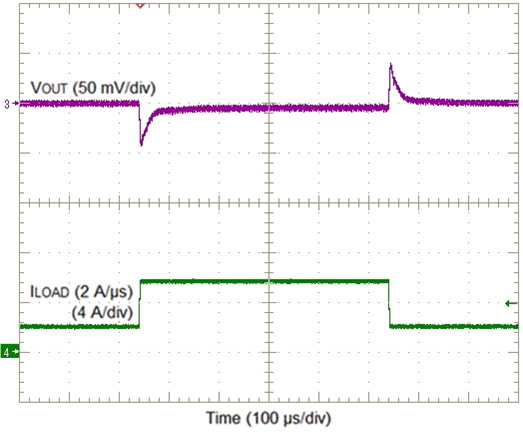
| VOUT = 0.8 V | COUT = 300 µF ceramic + 330 µF polymer | |
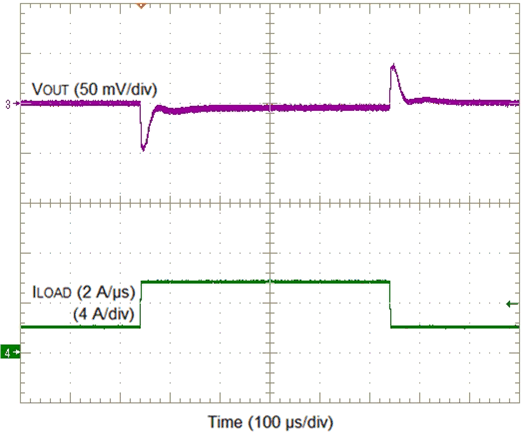
| VOUT = 1 V | COUT = 200 µF ceramic + 220 µF polymer | |
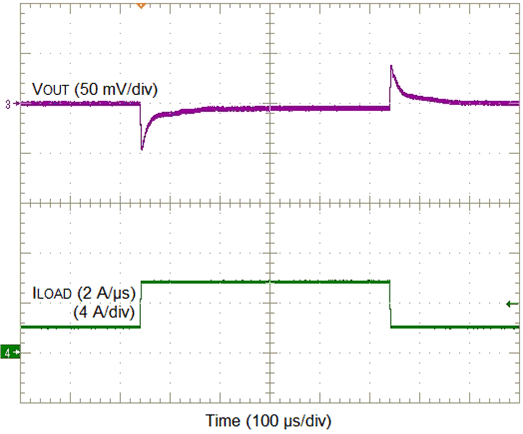
| VOUT = 1.2 V | COUT = 400 µF ceramic | |
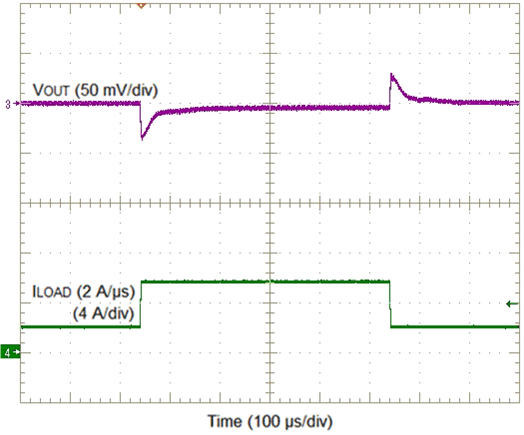
| VOUT = 0.8 V | COUT = 400 µF ceramic + 330 µF polymer | |
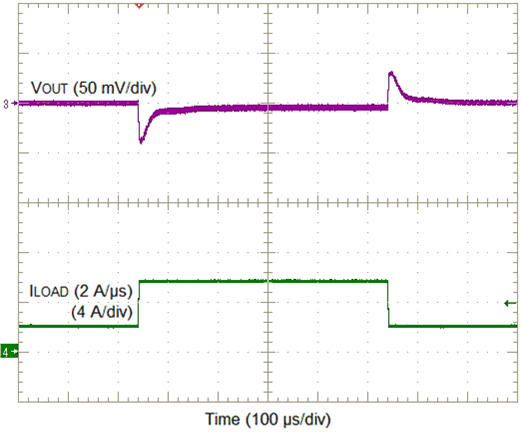
| VOUT = 1 V | COUT = 400 µF ceramic + 220 µF polymer | |
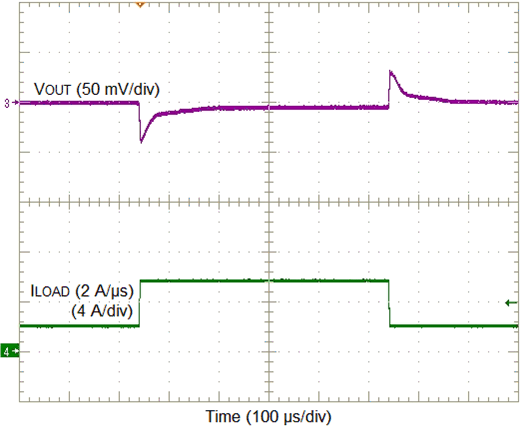
| VOUT = 1.2 V | COUT = 400 µF ceramic + 220 µF polymer | |